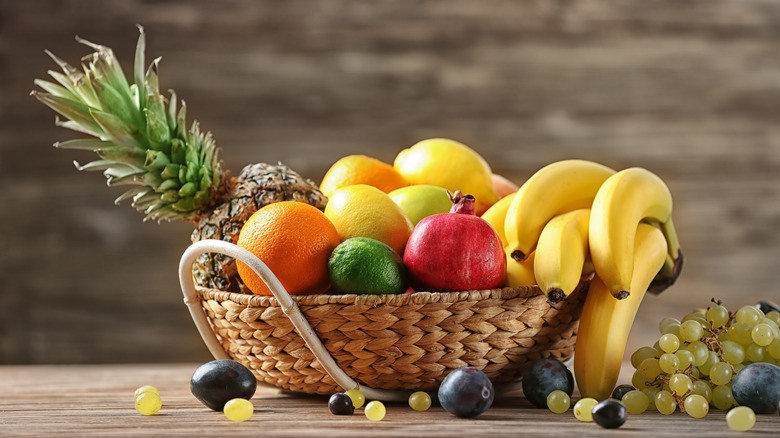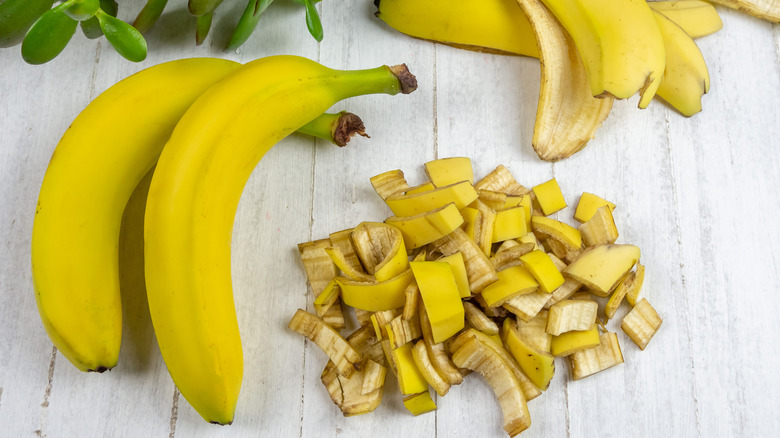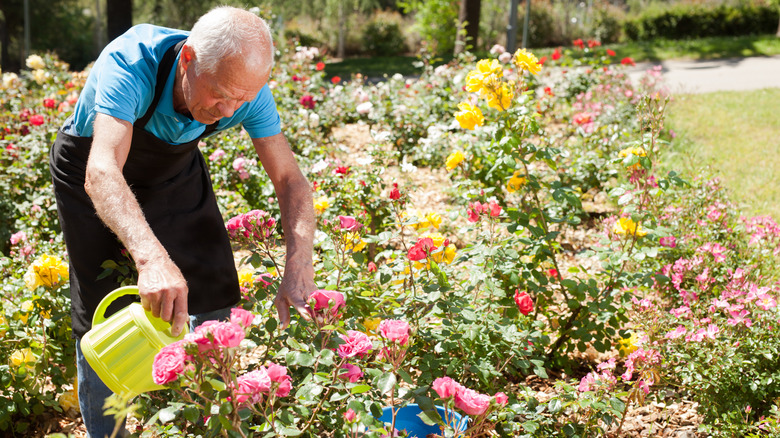The Fruit Leftover That You Can Use In Your Garden
The average American adult consumes almost a cup of fruit every day, but we should be aiming for about twice that amount, according to the USDA Economic Research Service. Gardening can be a great way to encourage more fresh fruit consumption in your household, but it can take a long time to harvest a good crop, especially if your garden soil lacks essential nutrients. At the same time, mass-produced fruits and vegetables make up for the majority of America's food waste — up to 60% of fruits and vegetables grown are never consumed (via Forbes).
These issues may seem unrelated, but the simple habit of composting old fruits can help you lessen your environmental impact, give back to your garden, and get more fresh produce on your table. Most gardeners know starting and maintaining a compost pile has many benefits for your garden and the planet, but did you know that some fruits are even better nutrient boosters than others? Learn more about the leftovers you should always be saving from your morning smoothie and how you can use them to nourish your garden.
Don't toss your banana peels
If you love bananas, you're in luck. Commercial fertilizers tend to be pricey, and they can cause your garden more harm than good if applied incorrectly. According to the University of Minnesota Extension, using too much fertilizer or fertilizer that's too strong can kill your garden by burning or drying out the plant roots. Banana peels aren't just a cheap and waste-free alternative to harsh chemical fertilizers; they're also much gentler on garden plants and provide many of the same essential nutrients, including potassium, nitrogen, phosphorous, magnesium, and calcium (via Accessible Gardens).
Of course, banana peels can take a long time to decompose naturally in the soil or a compost pile, so Farm Flavor offers a simple method to get those vital nutrients into your garden more quickly. Before peeling your bananas to enjoy a smoothie or healthy snack, give them a good rinse to wash away any excess pesticides. Next, peel the bananas and chop the peels into coarse pieces. Toss the pieces into a blender with a small amount of water, blend until liquified, and you've got a natural and nutrient-dense fertilizer mixture!
Using banana peels in your garden
Applying your blended banana peel mixture to your garden is incredibly easy. Most plants love potassium, but there are some plants that need high amounts in order to thrive and produce, including blackcurrants, redcurrants, fruit trees, potatoes, tomatoes, and squash (via Green Shack). By recycling your banana peels into your garden, you'll end up with more fresh crops on your table! Ornamental plants like roses and staghorn ferns also benefit from this banana mixture. According to the University of Minnesota Extension, potassium needs to be close to the roots to be absorbed, so apply the liquified banana peel mixture at the base of your plants, then follow up with a generous amount of water to help the nutrients soak in.
Banana peels and the liquid mixture can also deter aphids and other pests. Accessible Gardens recommends placing chopped peels around the base of your garden plants, especially if they're affected by aphids. Because of the fruits' strong smell and sulfur content, aphids and other pests will flee the scene. Banana mixture is great to add to your soil at any time of year, but you'll see the best results in growth and pest reduction if you apply it in spring or early fall.


